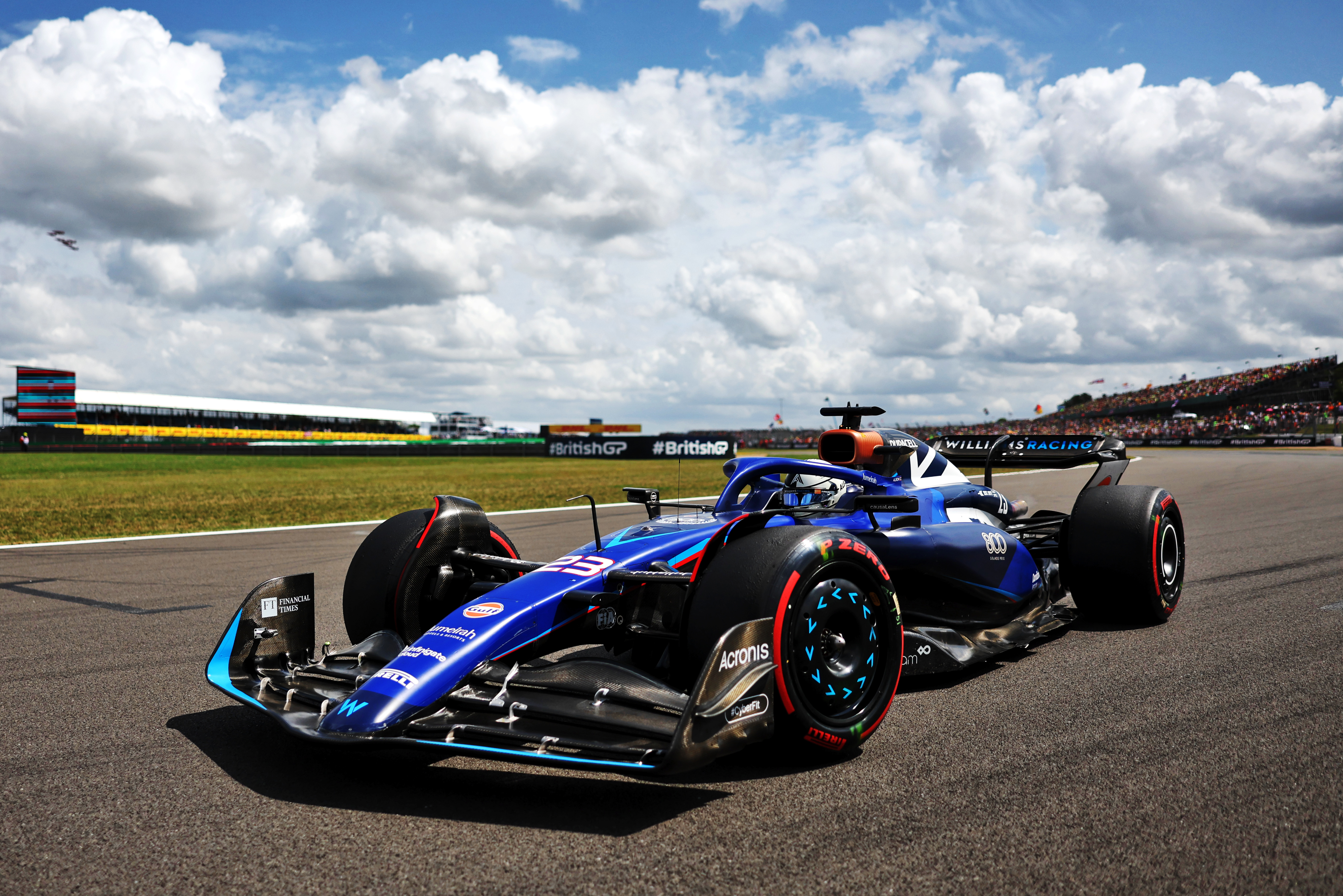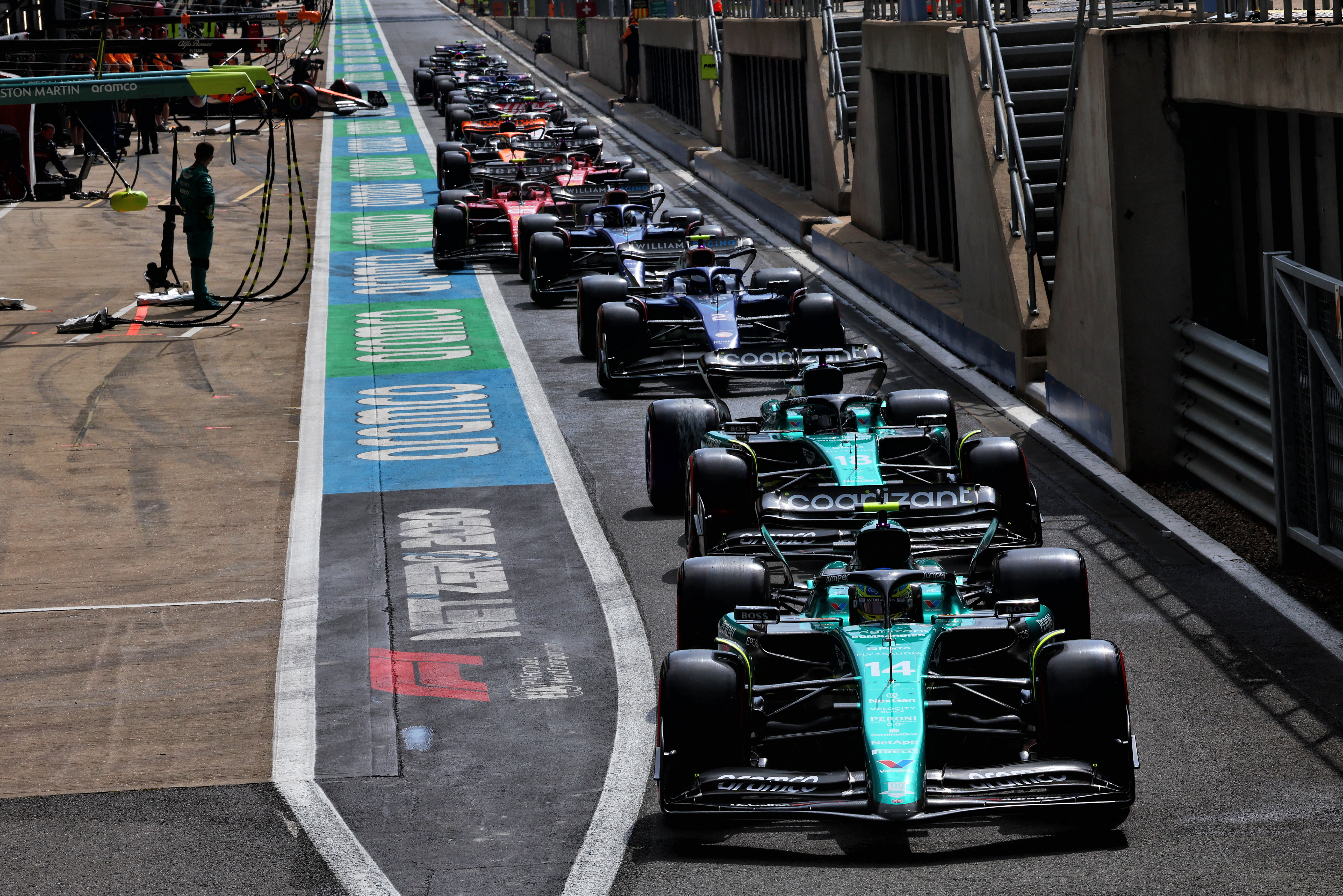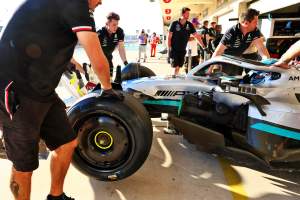Up Next

The crucial final test of Pirelli’s blanketless Formula 1 tyres takes place at Silverstone on Tuesday and Wednesday, the final two days of running before a decision is made on whether they will be raced next year.
This will therefore be the last opportunity for Pirelli to gather data that can be presented to the FIA, F1 and the teams about the viability of the ban on tyre blankets, and any other kind of tyre-warming technology, in 2024.
As it stands, the regulations for tyre warmers are the same in 2024 as they are today, but that could change after the Silverstone test.
Who is running?

Red Bull, Williams and Haas will each run a single car in the test.
Daniel Ricciardo will make his return to contemporary Red Bull F1 machinery for the first time since he left the team at the end of 2018, behind the wheel of the RB19 on the first day of running.
Williams is giving each of its race drivers, Logan Sargeant and Alex Albon, a day each, while Haas will split Tuesday between Nico Hulkenberg and Kevin Magnussen before test driver Pietro Fititpaldi takes over.
What is Pirelli aiming to learn?

Pirelli plans to focus its running on the harder end of the compound range, meaning the C1, C2 and C3 tyres. In its previous test, which followed the Spanish Grand Prix, the focus was on the other end of the range.
“The main target of the test is to see how the new compounds will behave with the most stressful circuit,” says Pirelli F1 chief engineer Simone Berra. “It’s interesting to see if the results from Barcelona are confirmed here if we have lower track temperatures and to see how the C1 that will be the hardest of the range works.”
While Pirelli had already achieved what it calls a “good base” for the structure, there is also some fine-tuning in the construction of the prototype tyres that will be trialled.
How good is the tyre warm-up?

The ability to produce a tyre that performs well but also warms up from cold quickly is the key objective of this development programme. In Barcelona, George Russell talked of the tyres being ready by Turn 5 on an outlap. However, he also gave the caveat that this was in very hot conditions on a high-load circuit, and with tyres towards the softer end of the compound range.
But Berra suggested the warm-up would be good at Silverstone despite the anticipated cooler temperatures. He’s confident that even running harder compounds, the tyres will get up to temperature relatively quickly.
What targets were Pirelli given?

The attempt to ban tyre warmers is a proposal pushed by the FIA and F1 to help with its sustainability objectives, with Pirelli being asked to develop a range of tyres suitable for this. It has already introduced a blanketless wet from the Monaco Grand Prix onwards, and also has a blanketless intermediate ready to go that has yet to be introduced.
But the focus has been on the slick tyres, with Pirelli being given only the vague target of producing tyres that have similar characteristics to the current ones.
“The target was just ‘remove the blankets and the tyres should remove the same’,” says Berra. “The targets were the same in terms of the delta between the compounds.
“The difficult task was to keep the same level of degradation. That means you need to improve the warm-up phase because you need a tyre that is ready after a few corners, but not decrease the performance on longer runs and increase overheating.
“So we keep the same targets as for the old product. There was no specification in terms of level of warm-up achievable, keeping in mind safety.”
What happens next?

Pirelli is certain that its blanketless tyres are good enough for 2024 and has already planned an ongoing testing programme should the blanketless tyres be given the go-ahead of next year. This includes extensive testing on lower-stress circuits. It’s therefore likely to recommend to the FIA that the ban goes ahead.
While the blanket ban was in the 2024 regulations for a long time, the rules were changed at the start of the year to put this on hold. Now, the FIA will decide based on the recommendation from Pirelli whether this is put to a vote in the F1 Commission that must take place by the end of this month.
Will the ban go ahead?

Assuming the FIA does decide that this should go to a vote of the F1 Commission, it would require what’s called a ‘simple’ majority of five out of 10 teams to go through. Given the scepticism expressed by some teams, including Mercedes, it seems there would be significant opposition.
Many drivers have also questioned the safety of the move, including Lewis Hamilton.
However, when it comes to the final vote teams will have the final data from Pirelli to base their judgement on. What’s more, some teams might see a competitive advantage to be gleaned should they back the change, meaning it’s not a foregone conclusion the vote would be lost even though that does currently appear the more likely outcome.
It’s also unclear how the progress of the 2025 F1 tyre tender might impact the process given Bridgestone has emerged as a serious rival to Pirelli.





